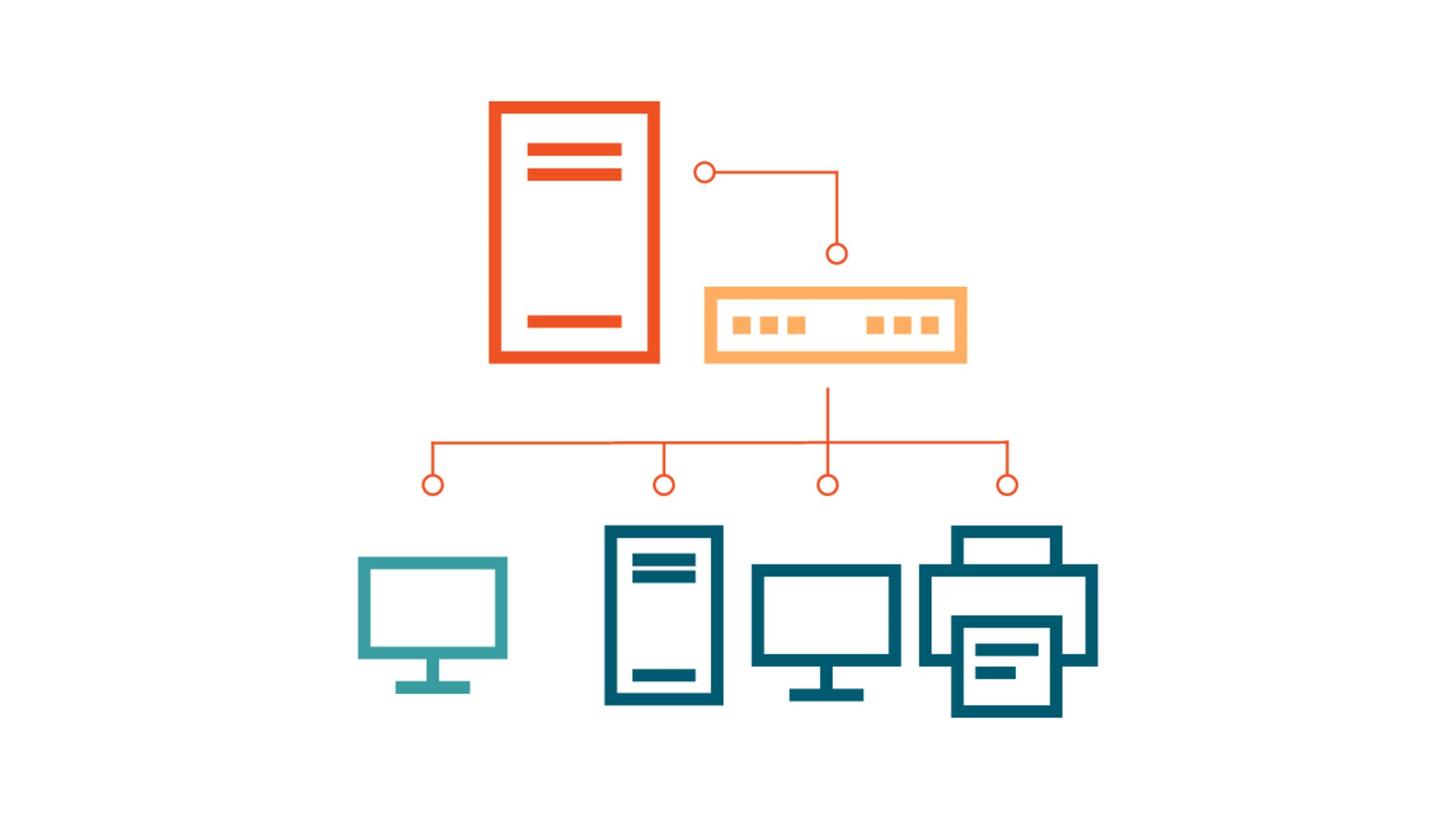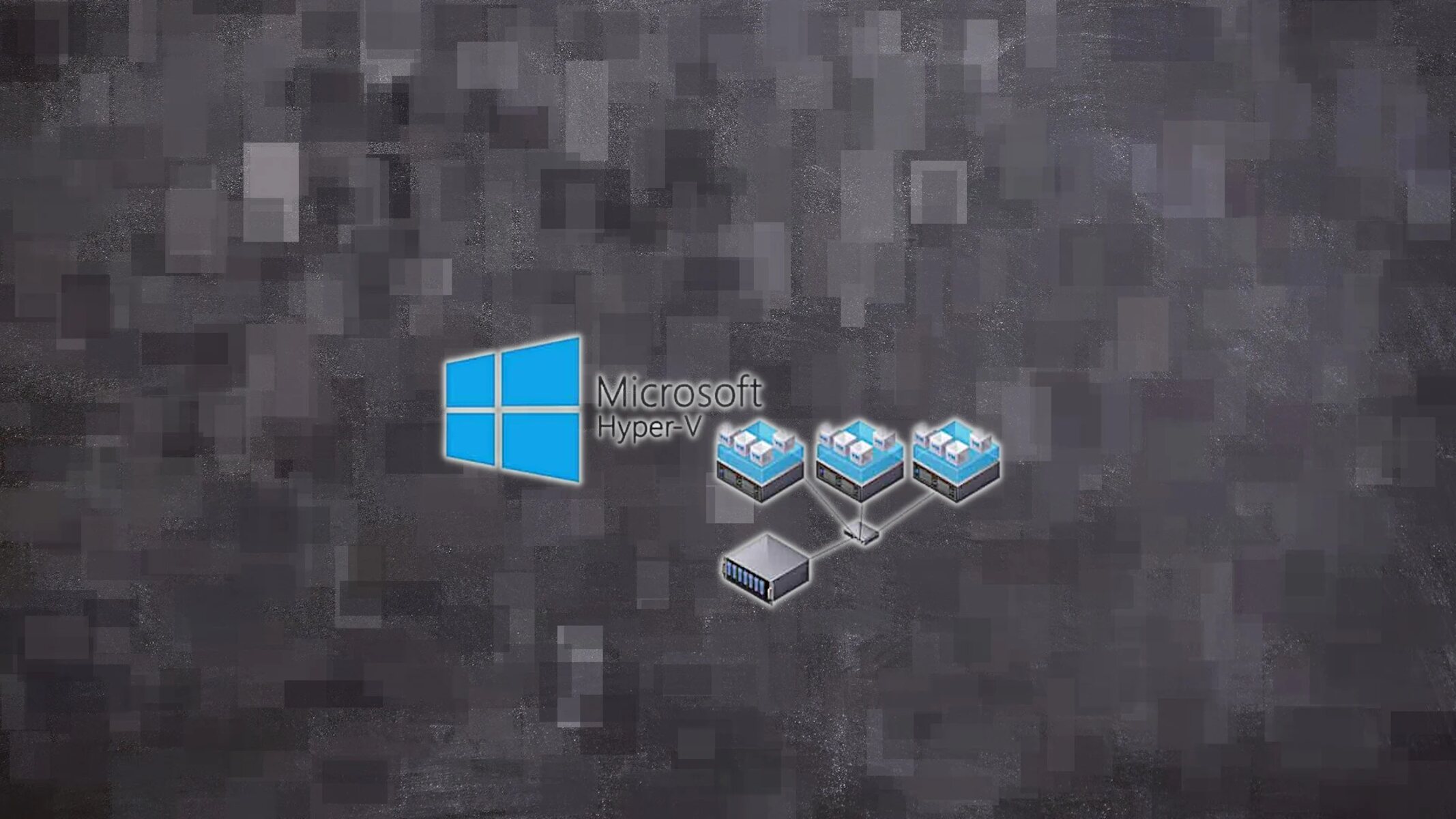Introduction
When setting up a workstation on a Windows Server, one important aspect to consider is how files are started up on logon. This process is essential for ensuring that all necessary files and applications are launched automatically when a user logs into their workstation. By configuring logon scripts, you can streamline the logon process and automate the execution of desired files.
Logon scripts are scripts or batch files that run automatically when a user logs in to a workstation. These scripts can be used to perform a variety of tasks, such as mapping network drives, connecting to printers, launching specific applications, or performing custom configurations. By automating these tasks, logon scripts can save time and effort for both users and system administrators.
There are two types of logon scripts that can be used on a Windows Server: local logon scripts and Group Policy logon scripts. Local logon scripts are executed from the individual workstation, while Group Policy logon scripts are deployed and controlled through the Group Policy Editor on the server.
To create a logon script, you need to have a basic understanding of scripting languages like PowerShell, VBScript, or batch scripting. These languages allow you to write instructions that the system will execute upon logon. You can create logon scripts using any text editor, but it’s recommended to use a specialized scripting editor to take advantage of syntax highlighting and code completion features.
To configure logon scripts using the Group Policy Editor, you first need to access the editor on your Windows Server. The Group Policy Editor allows you to define and manage Group Policies, which are a collection of settings that can be applied to users and computers in an Active Directory environment.
In the next section, we will explore how to access the Group Policy Editor and configure logon scripts using this powerful tool.
Understanding Logon Scripts
Logon scripts are instrumental in automating specific tasks and configurations when a user logs into a workstation on a Windows Server. These scripts can be written in various scripting languages such as PowerShell, VBScript, or batch scripting. By understanding the key components and functionalities of logon scripts, you can harness their power to streamline the logon process and enhance user productivity.
A logon script consists of a series of instructions or commands that are executed during the logon process. These instructions can include mapping network drives, connecting to printers, launching applications, modifying registry settings, or performing any other tasks necessary for users to start their work seamlessly.
Logon scripts are executed after a user provides their credentials and the Windows operating system verifies their authentication. At this point, the logon script is triggered and executed automatically, ensuring that the configured actions and tasks are performed without requiring manual intervention from the user.
By using logon scripts, system administrators can simplify the management of user workstations in an Active Directory environment. Instead of manually configuring each workstation, logon scripts allow for centralized management and customization of user settings. This saves time and effort by automating the deployment of specific configurations to multiple workstations simultaneously.
Logon scripts can be divided into two types: local logon scripts and Group Policy logon scripts. Local logon scripts are executed directly from the individual workstation. These scripts are typically stored in a specific location on the local machine and are called upon during the logon process.
Group Policy logon scripts, on the other hand, are managed through the Group Policy Editor on the Windows Server. Group Policy logon scripts offer greater control and flexibility as they can be applied to specific users, groups, or organizational units within an Active Directory domain. This allows system administrators to enforce consistent configurations across the network.
Whether using local logon scripts or Group Policy logon scripts, it is essential to ensure that the scripts are properly tested and validated before deploying them to production environments. Care should be taken to verify that the scripts perform the desired actions without causing any conflicts or unintended consequences.
In the next section, we will explore the process of creating a logon script using various scripting languages and how to access the Group Policy Editor to configure logon scripts on a Windows Server.
Types of Logon Scripts
When working with logon scripts on a Windows Server, it’s important to understand the two main types: local logon scripts and Group Policy logon scripts. These types serve different purposes and offer varying degrees of customization and control for automating specific tasks during the logon process.
1. Local Logon Scripts:
Local logon scripts are executed directly from the individual workstation and are typically stored in a specific location on the local machine. These scripts are often written in scripting languages such as PowerShell, VBScript, or batch scripting and can be accessed and executed during the logon process.
Local logon scripts are suitable for smaller environments or situations where specific configurations need to be applied to individual workstations. They provide flexibility in terms of customization and allow administrators to define unique logon actions for different users or machines.
However, managing local logon scripts can become challenging as the number of workstations increases. It requires manually configuring each machine and ensuring that the scripts are properly stored and maintained on each device. Additionally, troubleshooting and updating local logon scripts can be time-consuming and cumbersome.
2. Group Policy Logon Scripts:
Group Policy logon scripts offer a more centralized and scalable approach to managing logon scripts in an Active Directory environment. These scripts are deployed and controlled through the Group Policy Editor on a Windows Server.
Group Policy logon scripts provide greater control and consistency as they can be applied to specific users, groups, or organizational units within an Active Directory domain. Through the Group Policy Editor, administrators can define and manage logon scripts for multiple workstations simultaneously, ensuring consistent configurations across the network.
Group Policy logon scripts are stored on a central location, usually within the sysvol folder on the domain controller. This ensures that the scripts are easily accessible and can be updated or modified as needed without the need for direct access to individual workstations.
By leveraging Group Policy logon scripts, administrators can streamline the deployment of logon actions, such as mapping network drives, connecting to printers, or launching specific applications, across a large number of workstations. This reduces manual effort, ensures consistency, and simplifies the management of user settings.
When selecting the appropriate type of logon script, it’s essential to consider the size and complexity of the environment, as well as the level of customization required. For smaller environments with specific workstation needs, local logon scripts offer flexibility and customization options. For larger environments with the need for centralized management and consistency, Group Policy logon scripts provide scalability and efficient deployment.
In the next section, we will explore the process of creating logon scripts and how to access the Group Policy Editor to configure logon scripts on a Windows Server.
Creating a Logon Script
Creating a logon script allows you to automate specific tasks and configurations during the logon process on a Windows Server. Whether you’re using a local logon script or a Group Policy logon script, the process involves writing the necessary instructions in a scripting language of your choice and configuring the script to execute when a user logs into their workstation.
1. Choose a Scripting Language:
Start by selecting a scripting language to write your logon script. Popular options include PowerShell, VBScript, and batch scripting. Consider the specific tasks and configurations you want to automate, as different scripting languages may be better suited for different actions.
2. Write the Script:
Using a text editor or a specialized scripting editor, write the instructions for the logon script. Include the necessary commands to perform tasks such as mapping network drives, connecting to printers, launching applications, or modifying settings. Ensure that the script syntax is accurate and that it aligns with the chosen scripting language’s guidelines.
3. Test and Validate:
Once the logon script is written, it’s crucial to thoroughly test and validate its functionality. Test the script on a test workstation or virtual machine to ensure that it performs the desired actions without any errors or conflicts. Debug any issues that arise and make any necessary adjustments to the script.
4. Storing the Script:
For a local logon script, store the script in a specific location on the individual workstations, such as the Startup folder. This ensures that the script is accessible and executed during the logon process. Remember to properly distribute and maintain the script on each workstation.
For a Group Policy logon script, store the script in a central location, generally within the sysvol folder on the domain controller. This ensures that the script is easily accessible and can be managed and updated without requiring direct access to individual workstations.
5. Deploying the Script:
For local logon scripts, configure the workstation to execute the script during the logon process. This can typically be done through the Startup folder or by modifying the registry. Consult the documentation for your specific Windows version for detailed instructions on how to configure local logon scripts.
For Group Policy logon scripts, use the Group Policy Editor to configure the script to execute for specific users, groups, or organizational units. Access the Group Policy Editor, navigate to the appropriate Group Policy Object, and define the logon script settings. Ensure that the policy is applied to the desired target users or workstations.
Creating a logon script empowers system administrators to automate tasks and configurations, saving time and effort while ensuring consistency across workstations. By following these steps and leveraging the scripting language of your choice, you can create a logon script tailored to your specific needs.
In the next section, we will delve into accessing the Group Policy Editor and configuring logon scripts using this powerful tool on a Windows Server.
Accessing Group Policy Editor
The Group Policy Editor is a powerful tool that allows system administrators to define and manage Group Policies in an Active Directory environment. It provides a centralized location to configure various settings and policies, including logon scripts, for users and computers. Here’s how you can access the Group Policy Editor on a Windows Server:
1. Open the Run dialog:
Press the Windows key + R on your keyboard to open the Run dialog box. Alternatively, you can right-click on the Start button and select Run from the menu.
2. Type “gpedit.msc” and press Enter:
In the Run dialog box, type “gpedit.msc” (without the quotes) and hit Enter. This will launch the Group Policy Editor on your Windows Server.
3. Access the Group Policy Object:
Once the Group Policy Editor is open, you can now navigate to the Group Policy Object (GPO) that you wish to configure. GPOs allow you to define specific settings and policies for users and computers in your Active Directory domain.
4. Configure Logon Scripts:
To configure logon scripts using the Group Policy Editor, navigate to the appropriate GPO that you want to work with. Expand the hierarchy on the left side of the Group Policy Editor window until you locate the “Scripts (Logon/Logoff)” node under “User Configuration” or “Computer Configuration”, depending on whether you want to apply the logon script to users or computers.
5. Edit Logon Script:
Once you’ve located the “Scripts (Logon/Logoff)” node, double-click on it to open the Logon/Logoff Properties window. Here, you can add, edit, or remove logon scripts associated with the selected GPO. Click on the “Add” button to specify the path to the logon script file in the “Script Name” field. You can also add script parameters if required.
6. Apply the Logon Script:
After adding the logon script, click the “OK” button to save the changes. The logon script will now be applied to the users or computers included in the configured GPO. Ensure that the GPO is properly linked and applies to the desired users or computers within your domain.
Accessing the Group Policy Editor provides you with extensive control over the configuration of logon scripts in your Windows Server environment. With easy access to the editor, you can configure and manage logon scripts effectively, ensuring streamlined logon processes and automating essential tasks for users or computers.
In the next section, we will explore the process of configuring logon scripts using the Group Policy Editor in more detail.
Configuring Logon Scripts using Group Policy Editor
The Group Policy Editor provides a powerful interface for configuring logon scripts in an Active Directory environment. By using the Group Policy Editor, system administrators can define and manage logon scripts that are automatically executed when users or computers log in to the network. Here’s how you can configure logon scripts using the Group Policy Editor:
1. Access the Group Policy Editor:
Open the Group Policy Editor by pressing the Windows key + R on your keyboard to launch the Run dialog box. Type “gpedit.msc” (without quotes) and hit Enter. The Group Policy Editor window will open.
2. Navigate to the Group Policy Object:
In the Group Policy Editor window, expand the folders on the left side to locate and select the Group Policy Object (GPO) you want to configure. You can choose an existing GPO or create a new one specifically for logon scripts, depending on your requirements.
3. Configure Logon Scripts:
Once you’ve selected the desired GPO, navigate to either “User Configuration” or “Computer Configuration” depending on whether you want to apply the logon script to users or computers. Expand the folders until you find the “Scripts (Logon/Logoff)” node.
4. Edit Logon Script Settings:
Double-click on the “Scripts (Logon/Logoff)” node to open the Logon/Logoff Properties window. In this window, you can add, edit, or remove logon scripts associated with the selected GPO.
5. Add the Logon Script:
Click on the “Add” button in the Logon/Logoff Properties window to specify the path to the logon script file. You can either browse for the script file or enter the script’s path manually. Ensure that the script file is placed in a location that is accessible to the users or computers targeted by the GPO.
6. Configure Script Parameters:
If your logon script requires additional parameters, you can specify them by adding them in the “Script Parameters” field in the Logon/Logoff Properties window. Script parameters are passed to the script and can be used to customize its behavior based on specific requirements.
7. Save and Apply the Changes:
When you have finished configuring the logon script settings, click the “OK” button to save the changes and close the Logon/Logoff Properties window. The logon script will now be applied to the users or computers included in the configured GPO.
By configuring logon scripts using the Group Policy Editor, you can easily manage and enforce logon script execution across multiple users or computers in an Active Directory domain. This provides a centralized approach to streamline logon processes, automate tasks, and ensure consistent configurations for your network environment.
In the next section, we will discuss how to assign logon scripts to users or groups, ensuring targeted execution based on specific requirements.
Assigning Logon Scripts to Users or Groups
Once you have configured logon scripts using the Group Policy Editor on your Windows Server, the next step is to assign these scripts to specific users or groups. Assigning logon scripts allows for targeted execution of scripts, ensuring that the desired actions are performed during the logon process. Here’s how you can assign logon scripts to users or groups:
1. Access the Group Policy Editor:
Open the Group Policy Editor by pressing the Windows key + R on your keyboard to launch the Run dialog box. Type “gpedit.msc” (without quotes) and hit Enter. The Group Policy Editor window will open.
2. Navigate to the Group Policy Object:
In the Group Policy Editor window, expand the folders on the left side to locate the specific Group Policy Object (GPO) that contains the logon scripts you want to assign. Select the appropriate GPO based on your requirements.
3. Access the Logon Script Settings:
With the desired GPO selected, navigate to either “User Configuration” or “Computer Configuration”, depending on the target of your logon scripts. Expand the folders until you find the “Scripts (Logon/Logoff)” node.
4. Configure Logon Script Assignment:
Double-click on the “Scripts (Logon/Logoff)” node to open the Logon/Logoff Properties window. In this window, you will see two tabs: “Logon” and “Logoff”. Select the “Logon” tab to configure logon script assignment.
5. Add Logon Scripts to Users or Groups:
In the Logon Properties window, click on the “Add” button. This will open a new window where you can specify the users or groups to which you want to assign the logon script. Click on the “Browse” button to search for and select the desired users or groups.
6. Apply the Logon Script Assignment:
After selecting the users or groups, click the “OK” button to save the changes and close the window. The logon script will now be assigned to the specified users or groups through the configured GPO.
7. Test and Validate:
It’s crucial to test and validate the assigned logon scripts to ensure that they are executed correctly during the logon process. You can test the logon script by logging in as the assigned user or by simulating a logon event using tools such as Group Policy Management Console or Active Directory Users and Computers.
By assigning logon scripts to specific users or groups, you can ensure that the desired actions and configurations are applied during the logon process. This targeted approach allows for customized logon scripts based on user roles or organizational units, providing a seamless and efficient logon experience.
In the next section, we will discuss the importance of testing logon scripts and provide some tips for troubleshooting common issues that may arise.
Testing Logon Scripts
Testing logon scripts is a crucial step in ensuring their functionality and effectiveness. By thoroughly testing logon scripts, you can identify and address any issues or conflicts, ensure proper execution, and provide a seamless logon experience for users. Here are some tips for testing logon scripts:
1. Create a Test Environment:
Set up a test environment, ideally using a virtual machine or a dedicated test workstation that closely resembles your production environment. This allows you to simulate logon events without impacting your live environment. Ensure that the test environment replicates the configurations and settings of your actual workstations to accurately assess logon script behavior.
2. Test Different User Scenarios:
Consider the various user scenarios that may arise in your organization. Test logon scripts for different user roles, departments, or organizational units to ensure that the scripts function as intended under different circumstances. This helps identify any potential conflicts or inconsistencies that may occur when executing logon scripts for specific user groups.
3. Verify Script Execution:
During the testing process, verify that the logon script is being executed as expected. Check if the desired actions, such as mapping network drives, connecting to printers, or launching applications, are taking place. Review the output or logs generated by the script to ensure that it is performing the intended tasks without any errors or unexpected behaviors.
4. Monitor Logon Performance:
Pay attention to the impact of the logon scripts on the overall logon performance. Monitor the time it takes for users to log in to their workstations and assess whether the execution of logon scripts is causing any significant delays. Optimizing script efficiency and minimizing execution time can help improve the logon experience for users.
5. Solicit User Feedback:
Seek feedback from users who have experienced the logon process with the assigned logon scripts. Ask them to provide feedback on any issues or discrepancies encountered, as well as their general experience with the logon script execution. This feedback can help identify any user-specific issues that may not have been captured during testing.
6. Debug and Troubleshoot:
If issues or conflicts are encountered during testing, take the time to debug and troubleshoot the logon script. Review the script code and any error messages or logs generated during the testing process. In many cases, the issue can be resolved by identifying and rectifying script syntax errors, addressing conflicts with other scripts or policies, or adjusting script parameters as needed.
7. Iterate and Refine:
A testing phase provides an opportunity to iterate and refine your logon scripts. Based on the feedback and insights gained during testing, make any necessary adjustments or optimizations to the script. Continuously testing and refining logon scripts ensures that you provide the best possible logon experience for your users.
Thoroughly testing logon scripts before deploying them to the production environment is essential for ensuring their functionality, efficiency, and seamless execution during the logon process. By following these testing tips, you can identify and address any issues, optimize script performance, and provide a reliable logon experience for your users.
In the next section, we will explore some common troubleshooting techniques for logon scripts and discuss how to overcome common issues that may arise.
Troubleshooting Logon Scripts
Troubleshooting logon scripts is an essential part of ensuring their smooth execution and functionality in a Windows Server environment. When issues arise, it’s important to troubleshoot them promptly to minimize disruptions for users. Here are some common troubleshooting techniques and tips for resolving logon script issues:
1. Review Script Syntax:
Start by reviewing the syntax of your logon script. Ensure that the scripting language used is correct and that the script follows the proper syntax guidelines. Syntax errors can prevent scripts from executing correctly and may cause logon failures.
2. Check Script File Permissions:
Verify that the script file has the appropriate permissions for the users or groups executing the logon script. Insufficient permissions can result in script execution failures. Grant the necessary read and execute permissions to the script file to ensure it can be accessed during the logon process.
3. Validate Script Path:
Double-check the script path specified in the logon script configuration. Ensure that the path is accurate and accessible to the users or computers executing the script. If the script file is located on a network share, verify that the share permissions and network connectivity are properly set up.
4. Examine Logon Script Logs:
If your logon script generates logs or output, examine them for any error messages or indications of misconfiguration. Log files can provide valuable insights into the behavior of your logon script and help pinpoint issues that need to be addressed.
5. Check for Script Conflicts:
Be aware of any potential conflicts with other scripts or policies that may be running during the logon process. Conflicting scripts or policies can disrupt the execution of your logon script. Review the order of script execution and ensure that there are no conflicts or overlapping actions.
6. Test on Different Operating Systems:
If your environment consists of multiple operating systems, test your logon scripts on different OS versions to ensure compatibility. Scripts that work seamlessly on one OS version may encounter issues on another. Verify that the logon scripts function as expected across all targeted operating systems.
7. Remove Unnecessary Actions:
If your logon script includes actions that are not essential or causing issues, consider removing or disabling them. Simplifying the script to focus on core actions can help pinpoint and resolve any specific issues while minimizing unnecessary complexity.
8. Monitor Event Logs:
Monitor the event logs on the workstations or servers where the logon scripts are executed. Event logs can provide valuable information about script execution failures, error messages, or other related events that may impact logon script functionality.
9. Seek Expert Support:
If you encounter persistent logon script issues that you are unable to resolve, consider seeking expert support. Reach out to scripting forums, online communities, or your organization’s IT support team for assistance. Sharing specific details and logs can help experts provide targeted guidance and solutions.
By employing these troubleshooting techniques, you can identify and resolve logon script issues efficiently, ensuring that users experience a seamless logon process and that desired actions are performed as intended.
In the next section, we will summarize the key points covered in this article and re-emphasize the importance of logon scripts in Windows Server environments.
Conclusion
Logon scripts play a vital role in automating tasks and configurations during the logon process on a Windows Server. Whether using local logon scripts or Group Policy logon scripts, system administrators can streamline the logon experience, automate necessary actions, and ensure consistent configurations for users or computers in an Active Directory environment.
Understanding the different types of logon scripts and the process of creating them is crucial for effectively leveraging their capabilities. By choosing the appropriate scripting language and writing the necessary instructions, administrators can automate tasks such as mapping network drives, connecting to printers, launching applications, modifying settings, and much more.
Accessing the Group Policy Editor provides a centralized and powerful interface for configuring logon scripts. With the ability to define logon script settings and assign them to specific users or groups, administrators can enforce logon script execution and ensure targeted application of configurations throughout the network.
Thorough testing of logon scripts is essential for verifying their functionality and identifying any issues or conflicts. By creating a test environment, testing various user scenarios, verifying script execution, monitoring logon performance, and soliciting user feedback, administrators can ensure that logon scripts perform as expected and provide a seamless logon experience.
Troubleshooting logon script issues requires a systematic approach. By reviewing script syntax, checking file permissions, validating script paths, examining logs, resolving conflicts, testing on different operating systems, and seeking expert support when needed, administrators can resolve issues and optimize logon script execution.
In conclusion, logon scripts are an invaluable tool for system administrators to automate tasks, streamline the logon process, and maintain consistent configurations. By leveraging the capabilities of logon scripts, organizations can enhance user productivity, reduce manual effort, and ensure a seamless logon experience in their Windows Server environments.

























